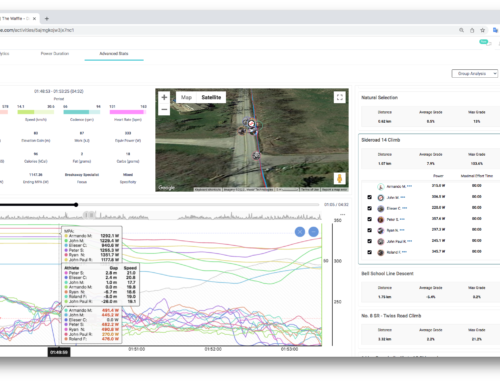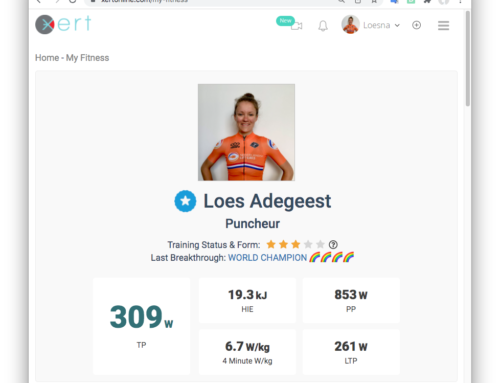Introduction
If you’ve trained for any amount of time, you have likely experienced some interruption to your training routine – whether that’s a family vacation, an unforeseen business trip, or a unexpected injury, or just taking some downtime after a long riding season. While being away from your bike may cause some slight separation anxiety, it does not mean that your hard-earned fitness is going to just dissappear and it’s going to take forever to get back to where you were before.
If you’re one to follow a training plan, it can often be difficult to know what to do. Whether to just resume where you left off or start a new plan or whether you might need another FTP test or not are not simple questions to answer. If you’re following Xert, you’re likely to see a big XSS deficit and may think you’re never going to close it.
In this blog post, we will discuss how you can use Xert to get back into training after taking some time off the bike, whether that’s due to traveling, sickness, injury, or simply a lack of motivation.
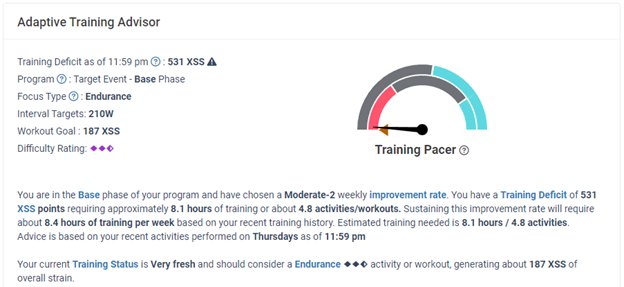
Cycling has Ups and Downs
From the amateur level all the way up to the professional levels, there are always peaks & valleys in your fitness journey. This may include making the podium at an important race, beating some of your mates on the local climb or even hitting a new all-time high Threshold Power. Sometimes, it also means some down-time at the end of a long season, or recovering from illness or injury.
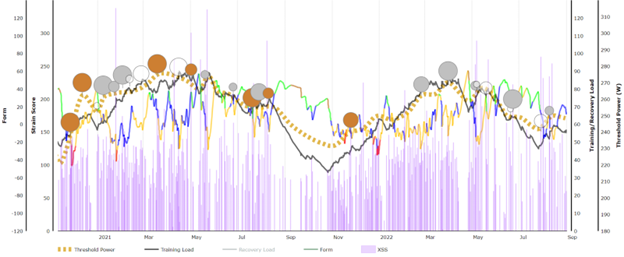
Keep in mind that these highs and lows are completely normal (and even desirable). Even athletes at the professional level take time at the end of the season to rest their bodies and reset their minds. Using that same focus and commitment they had to reach the levels of fitness before the break, Xerters confidently know they will be able to return to those same levels of fitness after the break. Occasionally, athletes may reach even higher levels of fitness as they continue learning about themselves and what it takes to get better and better. Ultimately, enjoying your fitness journey – including the temporary ups & downs – is a fundamental part of cycling.
If you been away for more than just a few weeks, whether that’s from having other priorities in life or an injury that has taken time to heal, and have seen your fitness reach new lows, now’s the time to get back into it. Don’t delegate the return to fitness to your future self. Just start the process again of riding, improving, a bit at a time and tracking your gains. Being as good as you can be, within the constraints your life gives you, is the goal and should be the benchmark of personal achievement.
Why Is My Deficit So Large?
If you’ve had a break from cycling, you might be frightened by a large XSS deficit and intimidated by the training pacer being pinned to the left-hand side of the dial. You might be asking yourself, why is my XSS deficit so large? Below, we’ll briefly explain how the training pacer works and why the deficit increases so much when you take a break from training.
In short, the Training Pacer needle looks at your last 7 days of training, your Training Status (overall Training Load) as well as your currently selected Improvement Rate (IR) and it calculates how much training needs to be done each day to maintain your selected IR. Generally you’ll see that the total amount of training that needs to be done will run in patterns – e.g. if you ride longer on Saturdays, your XSS deficit will increase relatively more on Saturdays. On the other hand, if you typically take Monday’s off, your XSS deficit will increase relatively less on Mondays. As you’re off the bike longer & longer, you continue to fall further below the training required to meet your selected Improvement Rate, and the Training Pacer needle will continue to shift further and further to the left-hand side.
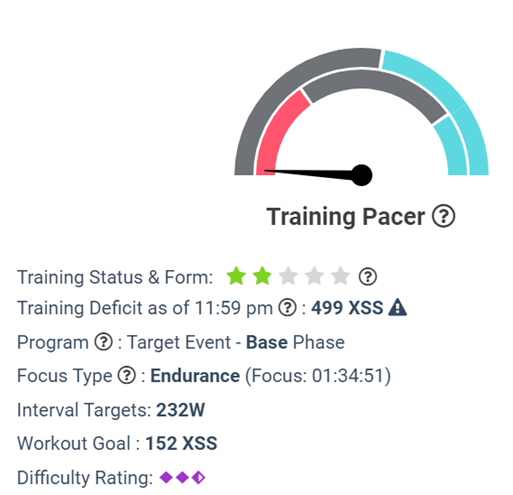
Generally speaking, the higher your training status was before your break from training, the larger your XSS deficit will be when you return to training. For example, a 4-star athlete needs to be doing approximately 770 XSS per week just to maintain their training load, while a 2-star athlete only needs about 350 XSS per week. So… if both athletes were to take a week off, the 4-star athlete will see a larger XSS deficit than the 2-star athlete. This is simply a reflection of a higher training load before the break.
Overall, the Xert Adaptive Training Advisor (XATA) understands how much training you do and works to close the total XSS deficit over the course of the next 7 days. As a result, the recommended workouts from XATA will have relatively high XSS amounts. Don’t fret, we will provide more detailed instructions on how to resume your training in the guide found at the bottom of this blog post – or click here to jump ahead!
Track your Progress!
Xert helps you keep track of progress in terms of the training investments you make to build the stars in your Training Status as well as the resulting breakthrough performances – identifying when your fitness improves and you’re seeing the gains get realized.
Fitness Testing
One problem that athletes might have when resuming their training after taking a long break is understanding where their current level of fitness truly is. Xert has fitness decay built into the model – when you aren’t training, your FTP, HIE, and Peak Power will slowly decay downward. This helps ensure that workouts are achievable when you do return to train.
If you’ve only been off the bike for a week or two, the signature decay is probably negligible, and you can resume training – whether you’re just riding or doing workouts – until you feel ready to push for a breakthrough. If you’ve been off the bike for a longer period of time, say 6 weeks or more, it’s possible that your signature may decay lower than your fitness truly is, so you may want to consider resetting your signature with a Breakthrough effort before you resume training with structured workouts.
If you’re recovering from an injury and are not able to push for a breakthrough, you may consider using the No Decay setting. Review this blog post for information on setting that up.
Remember that you will likely feel relatively fresh during your first couple of activities because of your time off the bike. Be careful not to over-do it at this point…there’s no need to regain all your fitness in just a few days!
Restarting Your Training with Xert
If you’ve been away from training for a while, you may have see your training pacer look something like this:
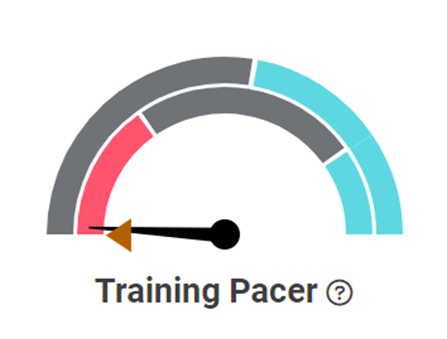
As we highlighted previously, the training pacer works on a rolling 7 day window, so you will need approximately 7 days of training to get the Training Pacer back on track. To make the deficit a bit more manageable, you may even consider changing your Improvement Rate to ‘Maintenance’ or ‘Off-Season’ – this will make it easier to close your XSS deficit in the first week of your return to training. If you have it set to ‘Extreme-2’, the deficit might be almost comical. There are a couple different ways you can handle your first week back into training after a break:
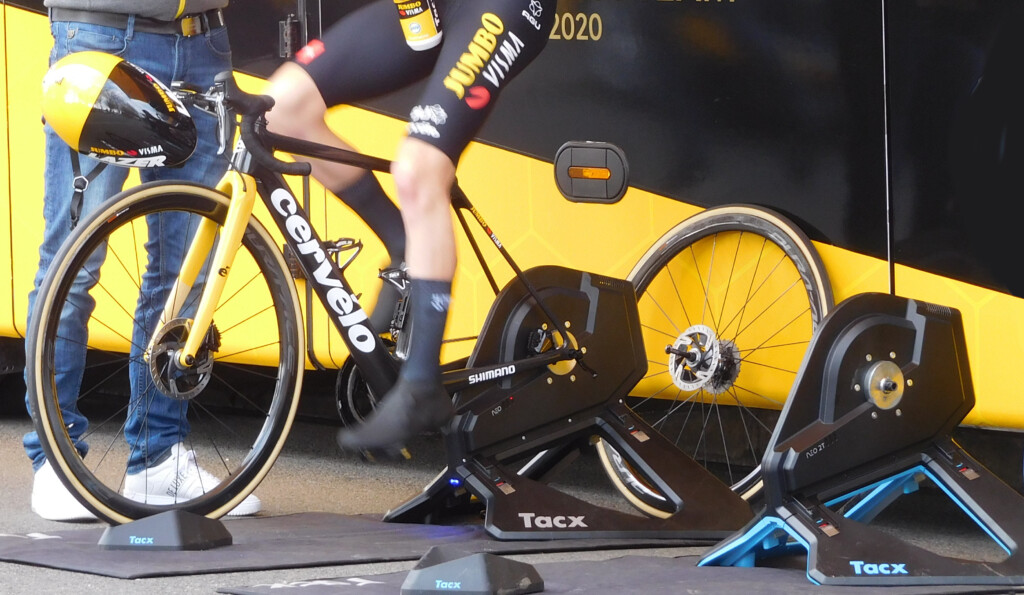
Option 1: Structured Training Using the Fitness Planner
Many athletes have some sort of weekly routine in their training – i.e. Monday is an easy/recovery day, Tuesday & Thursday are high-intensity days, etc. When you initially return to cycling, you can get a sense of what it will take to get back on track again by using the Fitness Planner and manually scheduling your rides and workouts on particular days of the week. The primary benefit to restarting your training this way is that you can see how XATA responds to each planned activity or workout in advance and you’ll get a sense of when you’ll be back on par with your training. Once you’re back into your regular routine, you can start using XATA to help you track your deficits and use the Training Pacer and keep the needle pointing up. You can also switch to another Improvement Rate the matches your time availability to train.
For example, if you want to start a new week with your endurance or recovery ride, click the ‘+’ button an use the workout filters to find a suitable endurance or recovery workout and schedule it for Monday:


From there, you can consider scheduling some High-Intensity days. If you plan to do HIIT on Tuesday & Thursday, you could click the “+” button on those days in the planner and set the planned time – this will ensure your workouts are ready in the Xert EBC app or Garmin Workout Player when it’s time to train. The apps will automatically select your scheduled workout approximately 2 hours before it’s planned time.
From the ‘Plan an Activity’ menu, you can quickly find your liked workouts & favourite activities by clicking the ‘star’ icon; alternatively you can use the text search to find other workouts. Once you’re happy with your selection, click the ‘Save’ button to save your changes to planner.

Alternatively, you could also click on a particular day of the week to view the training recommendations from Xert for that specific day. If desired, use the filters to narrow the recommendations by duration, focus, difficulty, etc:

You can continue using the planner to lay out your plans for the week ahead. If you schedule your weekly training, you will likely notice the training pacer slowly move from the left-hand side towards the 12 o’clock position. By the start of the second week, XATA and your Training Pacer should be back on track and you can resume using Xert’s Adaptive recommendations on a day-to-day basis!
Option 2: Unstructured Riding
While many people do enjoy having a set schedule, there are many Xerters who aren’t able to have a set weekly routine. You may also not be training for anything in particular and/or generally prefer to ride for fun. In this case, you may choose to just ride as you expect to be riding in the coming weeks. You don’t need to follow XATA and the training pacer for the first week or two as you ease back into training.

You might choose to free-ride outdoors (or free-ride indoors on your favorite virtual training program), manually select one of your favorite Xert SMART workouts, or even join a group ride/group workout.
Despite an overall lack of structure, free-riding is an excellent way to ease back into your training routine. In fact, you should notice that the training pacer will slowly transition from “Falling Behind” on the left-hand side, up towards the 12 o’clock position – just as if you had performed structured training for your return to training!

Note: If you previously lowered your Improvement Rate to decrease the deficit, you can consider adjusting your IR back up as the deficit becomes more manageable. After about 7 days of training, your training pacer will be completely reset.
Ultimately, you should feel confident that after about a week of riding – structured or unstructured – you will be able to resume your adaptive training with Xert!
Conclusion
In this blog post, we covered some general tips on how you can return to training after a break. We provided some general principles of returning to training, as well as explaining how you can jump-start your return to training with Xert! As always, we hope this blog post was interesting & that you learned something!



